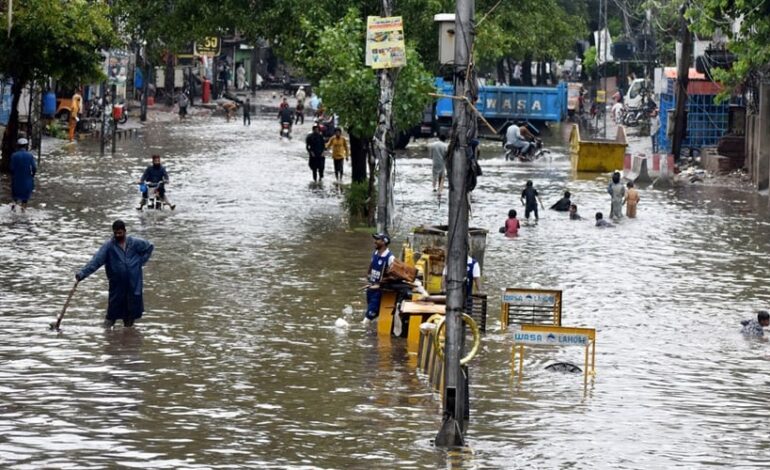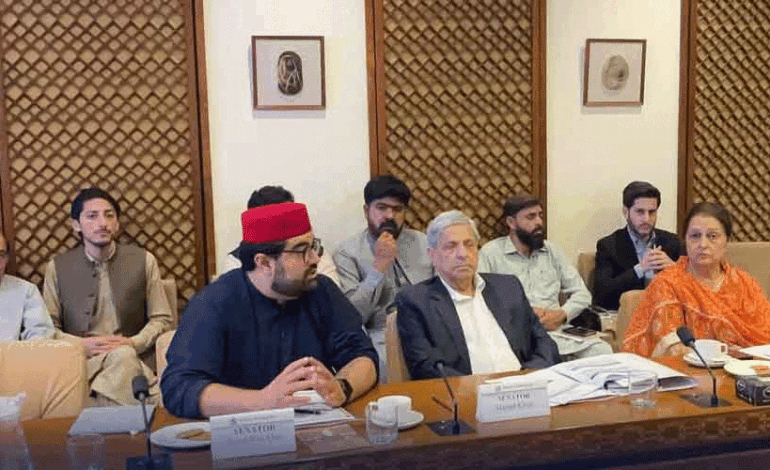
Monsoon in Pakistan to start early with 5% more rainfall: NDMA warns
Authority says rapid glacier melting may trigger floods in Gilgit-Baltistan, KP, Kashmir
The upcoming monsoon season is expected to begin earlier than usual and bring heavier rainfall, the National Disaster Management Authority (NDMA) informed the Senate Standing Committee on Climate Change during a briefing on Wednesday.
During the committee’s visit to NDMA headquarters, NDMA Chairman Lt Gen Inam Haider Malik warned that the monsoon may begin around June 26–27, roughly three to four days ahead of its typical onset. Rainfall across the country is likely to exceed normal levels by up to 5%, with northeastern Punjab bracing for a 50% increase.
Later, a Senate Standing Committee meeting was chaired by Senator Sherry Rehman, who expressed concern over extreme weather patterns and their long-term implications. The NDMA chief briefed the members on key monsoon and temperature forecasts based on 30 years of climate data.
“Punjab typically receives 344mm of rainfall during the monsoon. This year, it may receive around 388mm,” he said. Cities like Gujranwala, Lahore, Sialkot, and Narowal are projected to receive up to 380mm of rain. Similarly, rainfall in KP is expected to rise from the usual 243mm to nearly 300mm, with southern KP receiving normal or more than normal rainfall. Southern Punjab is also expected to see an increase.
However, northern KP and Balochistan are expected to receive below-normal rainfall, with temperatures likely to be higher than average. Azad Kashmir will also receive more rain, the NDMA chairman briefed.
In Punjab, there will be a difference of 2-3 degrees in the temperature. In Sindh, temperatures are forecast to rise by 2.5°C above normal, while south Punjab and Sindh may experience a 4–5°C increase, potentially intensifying heatwave conditions.
In KP, he went on to say, there is a 1.5-degree difference projected, with more rains expected in monsoon. However, he said, the rainfall will decrease in Chitral and glacier-affected KP. Lt Gen Malik said the authority issued data three to six months in advance, adding that they had issued an advisory on the ongoing heatwave six months ago.
The NDMA also warned of increased cloudbursts and potential flooding, particularly in glacial regions. “Rapid glacier melting due to elevated temperatures could trigger floods in Gilgit-Baltistan, KP, and Azad Kashmir,” the chairman noted. He added that following the initial flooding phase, a potential water shortage could emerge as glacier reserves diminish more quickly than expected.
Senator Sherry Rehman also raised concerns about the implications of India’s unilateral suspension of the Indus Waters Treaty. NDMA officials confirmed that a comprehensive study on the matter is currently underway to assess its impact on Pakistan’s water security.
The NDMA further emphasized the urgent need to address encroachments within riverbeds, which could exacerbate the impact of flooding during the monsoon season.
The session concluded with calls for strengthened disaster preparedness, improved forecasting systems, and more collaborative planning across federal and provincial levels to mitigate climate-related risks.






